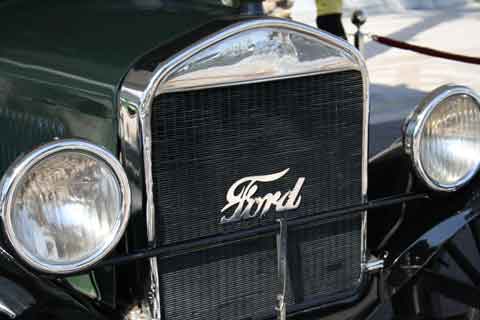





Radiator cooling system failure is one of the most common causes of car breakdown. Most cooling system failures arise from poor radiator maintenance. Many radiator problems can be prevented with regular radiator maintenance and periodic professional inspections of you car radiator and cooling system.
Please note that we do not perform repairs on radiators (such as cracks in the tank or leaks at the seams), but we would be happy to help you with a full replacment of the radiator or hoses, should that be necessary.
Here are a few of the most common radiator problems:
Leaky fittings or seams: As a car gets older your parts are going to wear. For your car radiator, that means hoses, clamps, sealed seams, and secondary fittings (like an automatic transmission oil cooler). Keep an eye out for overly rusted clamp, for leaking seams where the cores join the tanks, and split hoses. This can occur with or without regular radiator maintenance.
Fin deterioration and bond failure: Constant exposure to dirt, water, or road salt can coat, corrode, or damage the cooling fins on your radiator cores. Radiator maintenance here includes regular cleaning and inspection, which can greatly increase the life of your radiator cores. Many radiator cores are bonded to the tanks with solder or epoxy and these are common points of failure.
Electrolysis: If dirty or mineral-rich water is used in a cooling system, you can quickly accumulate scaling and sediment build-up on the interior of your radiator. Electrolysis is the process by which this accumulation occurs. This build-up can be cleaned out with radiator cleaners and, for some radiators, with a rod and brush.
Cracked tank: One of the most common radiator problems is a cracked tank. Sometimes, it is caused by corrosion, other times it is from tank faults or internal pressure. Many radiators have removable tanks that can be replaced when they fail.
Fan damage: An improperly fitted fan can rub against or hit the radiator when the car goes over a bump. This will bend and sometimes split the radiator cores, reducing cooling efficiency and causing leaks. You should periodically visually inspect your radiator cores for fan damage.
Those are the most common car radiator problems. Simple preventative maintenance can save you from most of them. Remember, to keep your cooling system running in tip-top shape, you should have it professionally inspected and serviced at least once every two years for proper radiator maintenance.
 All cars, trucks, and SUVs use the same basic automotive radiator cooling system to keep their internal combustion engines from overheating. As you might imagine, the heat from the controlled ignition of diesel or gasoline in an engine's cylinders needs to be dissipated safely to prevent an engine from getting too hot. The automotive radiator is a simple and elegant solution to the need for engine cooling.
All cars, trucks, and SUVs use the same basic automotive radiator cooling system to keep their internal combustion engines from overheating. As you might imagine, the heat from the controlled ignition of diesel or gasoline in an engine's cylinders needs to be dissipated safely to prevent an engine from getting too hot. The automotive radiator is a simple and elegant solution to the need for engine cooling.
By passing a cooler liquid through the engine, the radiator can transfer heat from the metal of the engine block to the liquid. The hot liquid coolant then passes out of the engine and needs to be cooled.
That's where your automobile's radiator comes in: by passing the hot coolant through the cool metal grate of the radiator, a large amount of heat can be dissipated quickly.
These metal grates are your automotive radiator's cooling cores. Made from copper or aluminum, they cool quickly in the airflow that comes through the grill of your car, truck, or SUV. When you are sitting at a stoplight or going very slowly, a fan attached to your engine forces air across the radiator cores to continue engine cooling.
The coolant in an automotive radiator system only flows one way. Only coolant that has flowed through the radiator cores can enter the engine. This ensures that the coolest liquid is always entering the engine and the hottest is always heading for the radiator.
Many modern engines will also pass oil from the automatic transmission through an oil cooler attached or built into the automotive radiator.
Engine coolant is usually one half water and one half anti-freeze (Propylene Glycol), though you can safely cool an engine with entirely water as long as you live in a place where the temperature never reaches freezing.
It is usually greenish in color and has a slight oily texture. If you think your automotive radiator system may be leaking, have it check professionally right away.
The automotive radiator is a relatively simple technology, one that has been around almost as long as automobiles have been in production.